 Search by Keyword
Sign Up Below for our MONTHLY BEATLES TRIVIA QUIZ!
|
"WHEN I GET HOME"
(John Lennon - Paul McCartney)
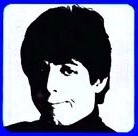 Underrated and underappreciated. These two words adequately describe the song "When I Get Home" as it pertains to The Beatles cannon as a whole. Various music authors have described the song as "hastily assembled," "one bluesy holler too many" and as "fairly forgettable." Many avid Beatles enthusiasts are accustomed to skipping over the song when the album is played. Some self-proclaimed "hard core" fans claim to be unfamiliar with the song. Underrated and underappreciated. These two words adequately describe the song "When I Get Home" as it pertains to The Beatles cannon as a whole. Various music authors have described the song as "hastily assembled," "one bluesy holler too many" and as "fairly forgettable." Many avid Beatles enthusiasts are accustomed to skipping over the song when the album is played. Some self-proclaimed "hard core" fans claim to be unfamiliar with the song.
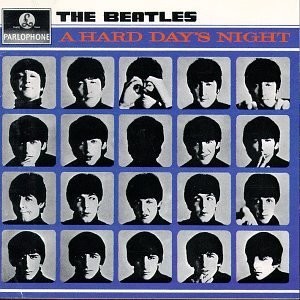 Could there be 'more than meets the eye' when it comes to "When I Get Home"? Although this was the very last offering for the British "A Hard Day's Night" album, does that mean it was simply rushed through and deemed to be without merit? Could there be 'more than meets the eye' when it comes to "When I Get Home"? Although this was the very last offering for the British "A Hard Day's Night" album, does that mean it was simply rushed through and deemed to be without merit?
Lennon and McCartney have been very vocal in interviews about which of their compositions were "hack songs" or a "work job," meaning songs that were cranked out in a hurry as filler material. "Hold Me Tight" and "Little Child" fit that description, according to their composers. But neither John nor Paul described "When I Get Home" with those words. In fact, upon examination, we'll find that much care and thought went into this charismatic song.
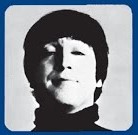 "I'd rather write a song with chords all over the place," John said during an interview around the time this song was recorded. The complicated structure in this song shows that The Beatles were excelling at experimenting with the different ways chords can relate to each other. And lyrically, we see Lennon expressing honest, simple desires for normalcy amid the chaos of Beatlemania. "I'd rather write a song with chords all over the place," John said during an interview around the time this song was recorded. The complicated structure in this song shows that The Beatles were excelling at experimenting with the different ways chords can relate to each other. And lyrically, we see Lennon expressing honest, simple desires for normalcy amid the chaos of Beatlemania.
No, "When It Get Home" does not have hit potential, and is arguably the least commercially accessible of all the tracks on this album, but what it has to offer is worth finding. A true hidden gem!
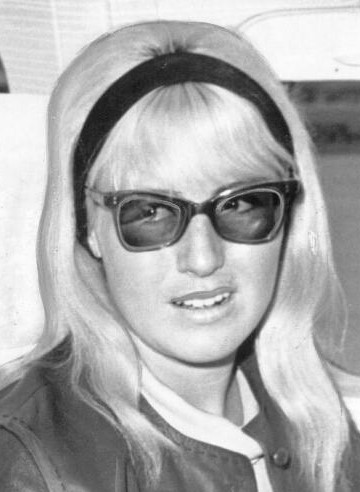
Cynthia Lennon
Songwriting History
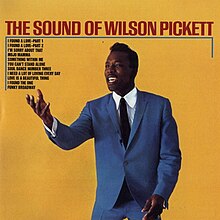 "That's me again," Lennon remembered, "another Wilson Pickett, Motown sound...a four-in-the-bar cowbell song." While it's true that Wilson Pickett didn't formulate his trademark R&B sound until the latter half of 1965, the Motown/Stax rhythms of the early '60s were what fueled John's inspiration for this track. "That's me again," Lennon remembered, "another Wilson Pickett, Motown sound...a four-in-the-bar cowbell song." While it's true that Wilson Pickett didn't formulate his trademark R&B sound until the latter half of 1965, the Motown/Stax rhythms of the early '60s were what fueled John's inspiration for this track.
Regarding this and other songs John wrote for the "A Hard Day's Night" album, McCartney expressed that they "may have been based in real experiences...with Cynthia or whatever, but it never occurred to us until later to put that slant on it all." Given the extremely busy schedule that consumed The Beatles in early 1964, with concert appearances in Britain, Paris and America as well as recording sessions and shooting their first movie, it's quite likely that this song is reflecting his longing for the comforts of home and family.
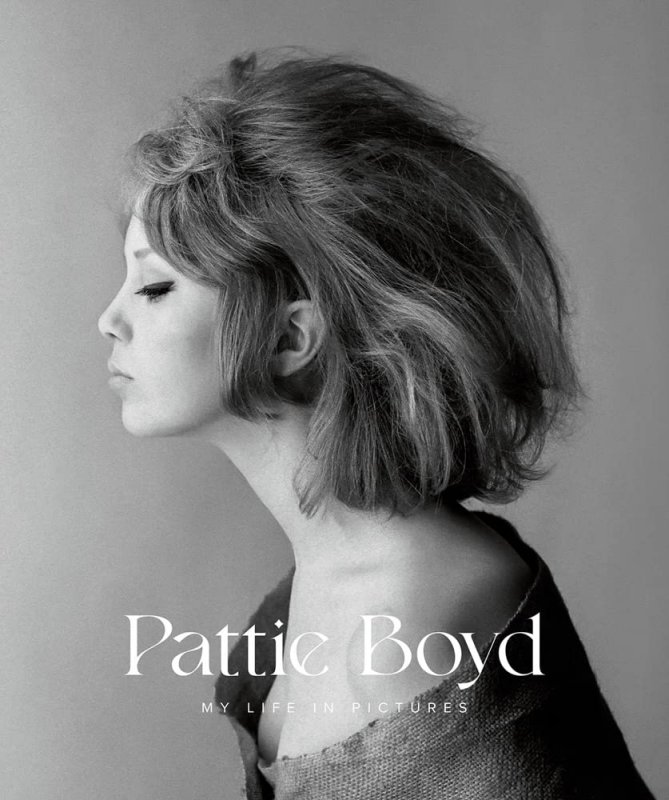 As for the timeframe for the song, it also seems likely to have been written during his month off on vacation in Tahiti with wife Cynthia, George Harrison, and George's new girlfriend Pattie Boyd (whom George had just met on the set of "A Hard Day's Night") in May of 1964. As for the timeframe for the song, it also seems likely to have been written during his month off on vacation in Tahiti with wife Cynthia, George Harrison, and George's new girlfriend Pattie Boyd (whom George had just met on the set of "A Hard Day's Night") in May of 1964.
Recording History
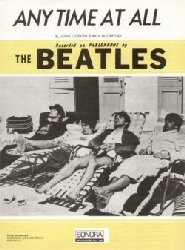 June 2nd, 1964 was the final recording date utilized for introducing songs for the British "A Hard Day's Night" album. This day witnessed three brand new Lennon / McCartney songs debut, the first two ("Any Time At All" and "Things We Said Today") being worked on in the afternoon session between 2:30 and 5:30 pm. The evening session, which ran from 7 to 10 pm, saw The Beatles start and finish "When I Get Home" before returning for another stab at "Any Time At All." As usual, this session took place in EMI Studio Two in London. June 2nd, 1964 was the final recording date utilized for introducing songs for the British "A Hard Day's Night" album. This day witnessed three brand new Lennon / McCartney songs debut, the first two ("Any Time At All" and "Things We Said Today") being worked on in the afternoon session between 2:30 and 5:30 pm. The evening session, which ran from 7 to 10 pm, saw The Beatles start and finish "When I Get Home" before returning for another stab at "Any Time At All." As usual, this session took place in EMI Studio Two in London.
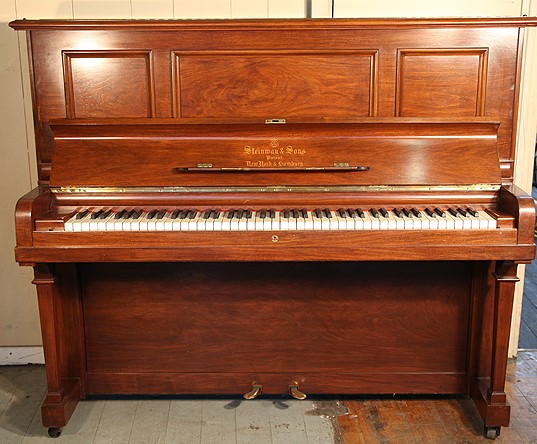 It took eleven takes to get the basic rhythm track down, which consisted of a full band arrangement (two guitars, bass and drums) with John's ballsy vocals. "Take eleven" was then used for overdubs, which consisted of John double-tracking his vocals during the bridge and final measures of the song, Paul and George's harmonies during the refrains and Paul on piano. The song was deemed complete and suitable for release by approximately 9 pm. It took eleven takes to get the basic rhythm track down, which consisted of a full band arrangement (two guitars, bass and drums) with John's ballsy vocals. "Take eleven" was then used for overdubs, which consisted of John double-tracking his vocals during the bridge and final measures of the song, Paul and George's harmonies during the refrains and Paul on piano. The song was deemed complete and suitable for release by approximately 9 pm.
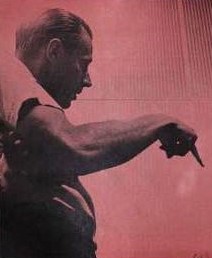 On June 4th, 1964, George Martin and engineers Norman Smith and Richard Langham created the first mono mix of the song in EMI Studio Two, although it was never used. On June 4th, 1964, George Martin and engineers Norman Smith and Richard Langham created the first mono mix of the song in EMI Studio Two, although it was never used.
All of the released mixes of the song were done on June 22nd, 1964 by George Martin, Norman Smith and 2nd engineer Geoff Emerick in the control room of EMI Studio One. Two mono mixes were made, the first one for release in Britain and the second for America. There are subtle differences between the two.
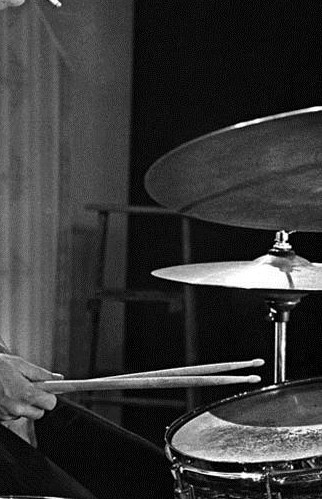 The US mono mix is the only one where you can fully detect the piano overdub, which is especially noticeable in the bridge. The UK mono mix, on the other hand, has louder cymbal crashes during the "whoa-ah" of the refrains. Care was taken in both mixes on the bridge during the line "till I walk out that door," because Lennon's double-tracked vocals were very disorienting when heard together. The mono mixes chose the vocal track John sang on the original take during the words "till I walk." The US mono mix is the only one where you can fully detect the piano overdub, which is especially noticeable in the bridge. The UK mono mix, on the other hand, has louder cymbal crashes during the "whoa-ah" of the refrains. Care was taken in both mixes on the bridge during the line "till I walk out that door," because Lennon's double-tracked vocals were very disorienting when heard together. The mono mixes chose the vocal track John sang on the original take during the words "till I walk."
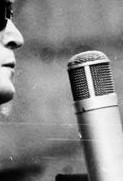 The stereo mix, also created on this day, shows that John's overdubbed vocal (not the original take) was used on that line. This was obviously the better choice because he actually hits the note properly this time around, where during the original take he didn't quite reach the note. On this mix, more words are included as single-tracked, which comprise "love her more, till I walk." This may be the only case in the early Beatles mixes where the stereo mix is superior to the mono. The stereo mix, also created on this day, shows that John's overdubbed vocal (not the original take) was used on that line. This was obviously the better choice because he actually hits the note properly this time around, where during the original take he didn't quite reach the note. On this mix, more words are included as single-tracked, which comprise "love her more, till I walk." This may be the only case in the early Beatles mixes where the stereo mix is superior to the mono.
Song Structure and Style
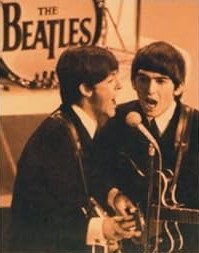 This compelling and interesting structure deviates from the norm in many ways, but still stays mostly within a six chord range. One somewhat unusual component in the song's pattern is the use of a refrain, which begins the song. The entire pattern consists of 'refrain/ verse/ refrain/ verse/ refrain/ bridge/ verse/ refrain' (or ababacba). This compelling and interesting structure deviates from the norm in many ways, but still stays mostly within a six chord range. One somewhat unusual component in the song's pattern is the use of a refrain, which begins the song. The entire pattern consists of 'refrain/ verse/ refrain/ verse/ refrain/ bridge/ verse/ refrain' (or ababacba).
We start out with a startling refrain that gives the illusion that we are entering into a song already in progress. The first thing we hear is jarring three-part harmony with Lennon belting out the lead on the wordless expression "whoah-I" in typical Beatles-like falsetto. Although the straining notes get to where they should be, we can't help but sense the awkwardness of the wavering measure-and-a-half final note. Further disorienting the listener, the home key doesn't actually reveal itself until the verse begins.
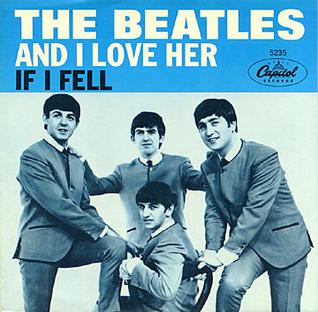 The eight-measure refrain that opens the song is also unique in that it begins in a major key and ends in a minor. In fact, The Beatles utilized this trick quite often throughout the entire British "A Hard Day's Night" album (note "And I Love Her" and "I'll Be Back" as examples). The eight-measure refrain that opens the song is also unique in that it begins in a major key and ends in a minor. In fact, The Beatles utilized this trick quite often throughout the entire British "A Hard Day's Night" album (note "And I Love Her" and "I'll Be Back" as examples).
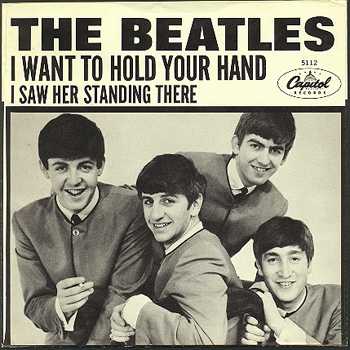 On top of it all, the repeated accent on the 'four-and' beat in the refrain, without any emphasis on the one-beat, can also leave the listener a little confused. Not that The Beatles hadn't also used this before, the most prominent example being the introduction to "I Want To Hold Your Hand." That disorienting beginning didn't hurt its popularity one bit, so "When I Get Home" should definitely not be faulted for containing a similarly ambiguous opening. On top of it all, the repeated accent on the 'four-and' beat in the refrain, without any emphasis on the one-beat, can also leave the listener a little confused. Not that The Beatles hadn't also used this before, the most prominent example being the introduction to "I Want To Hold Your Hand." That disorienting beginning didn't hurt its popularity one bit, so "When I Get Home" should definitely not be faulted for containing a similarly ambiguous opening.
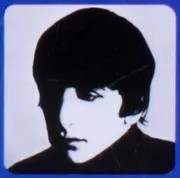 The three-part harmony appears only during the refrains of the song and continues until the final phrase of the refrain, the song's title, which is always sung by John alone. After this, The Beatles segue nicely into the home key of the verse with a jangly guitar passage coupled with an appropriate drum fill from Ringo. The three-part harmony appears only during the refrains of the song and continues until the final phrase of the refrain, the song's title, which is always sung by John alone. After this, The Beatles segue nicely into the home key of the verse with a jangly guitar passage coupled with an appropriate drum fill from Ringo.
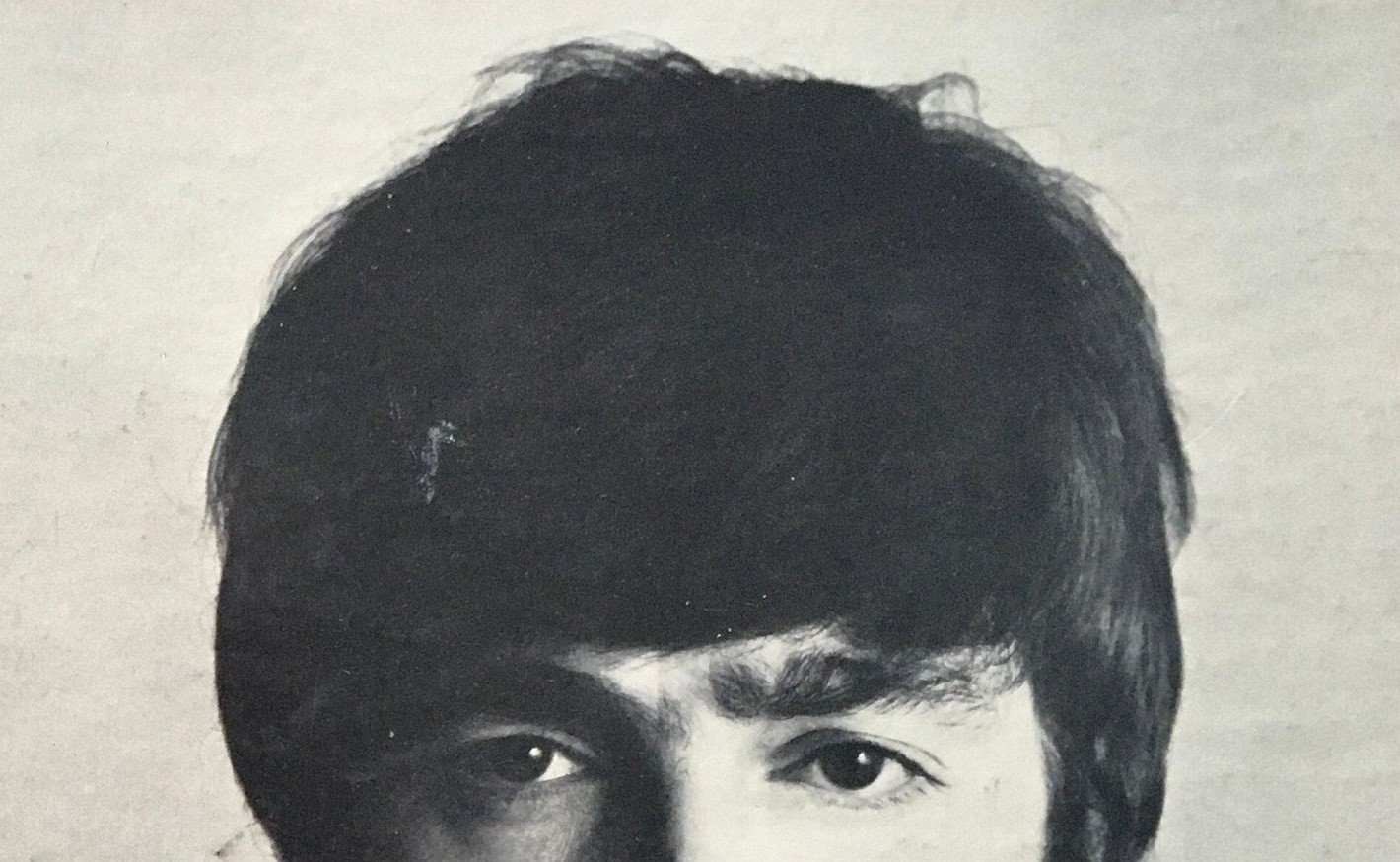 The first verse, sung solo and single-tracked by Lennon, is also eight measures long and works to establish the storyline. John sings more comfortably in this slightly lower range which works well as a contrast to the forceful delivery we hear next in the repeated refrain. The first verse, sung solo and single-tracked by Lennon, is also eight measures long and works to establish the storyline. John sings more comfortably in this slightly lower range which works well as a contrast to the forceful delivery we hear next in the repeated refrain.
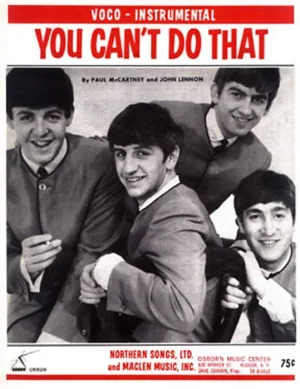 After another structurally identical verse and refrain, we come upon the ten-measure bridge, which is the only section of the song that is not symmetrical. Another unique characteristic of this bridge is that it uses the home key of C as its anchor and resolves itself at the end instead of being a natural segue into another verse. Although The Beatles have done this before (such as in "Please Please Me"), their usual use of the bridge thrusts you back naturally into another verse (such as in "You Can't Do That" or "From Me To You"). In this case, the last measure of the bridge is added to make a comfortable passage back to another verse, which mimics the same function at the end of the refrain. After another structurally identical verse and refrain, we come upon the ten-measure bridge, which is the only section of the song that is not symmetrical. Another unique characteristic of this bridge is that it uses the home key of C as its anchor and resolves itself at the end instead of being a natural segue into another verse. Although The Beatles have done this before (such as in "Please Please Me"), their usual use of the bridge thrusts you back naturally into another verse (such as in "You Can't Do That" or "From Me To You"). In this case, the last measure of the bridge is added to make a comfortable passage back to another verse, which mimics the same function at the end of the refrain.
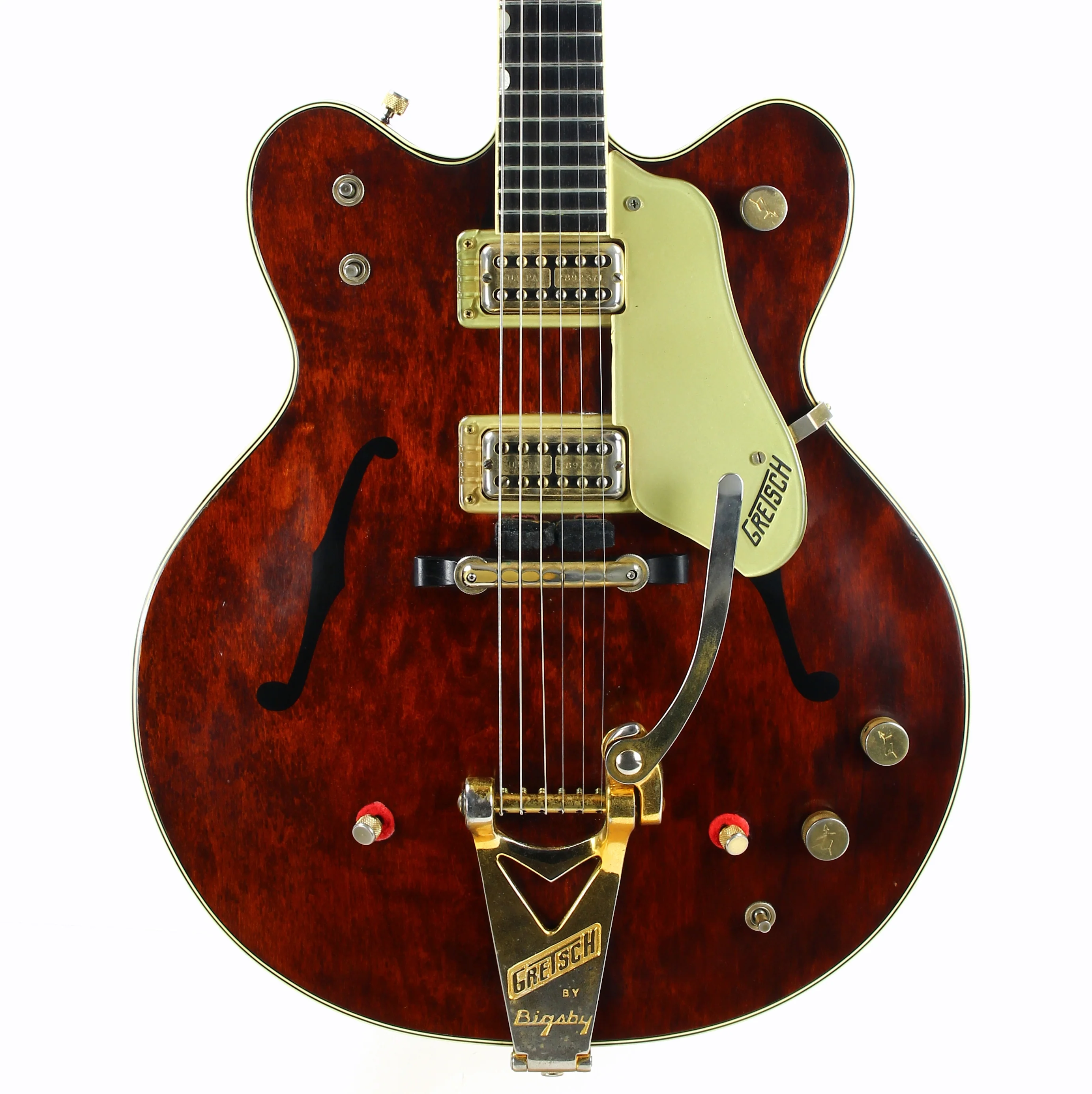 Interestingly, the jangly guitar passage from the end of the refrain is also heard at the end of the bridge, but Ringo fails to accompany it with his drum fill. We can forgive him for the error since he was in the hospital the next day with tonsillitis, and was no doubt in much pain on this day. We'll give him a break! Interestingly, the jangly guitar passage from the end of the refrain is also heard at the end of the bridge, but Ringo fails to accompany it with his drum fill. We can forgive him for the error since he was in the hospital the next day with tonsillitis, and was no doubt in much pain on this day. We'll give him a break!
After one final structurally identical verse we move into the final refrain, but this time the refrain is eleven measures long and acts as the song's conclusion. The latter half of the refrain is repeated, which stabilizes the song in the home key of C. Also noteworthy is that this is the only refrain that has John double-tracking his vocals on the title of the song.
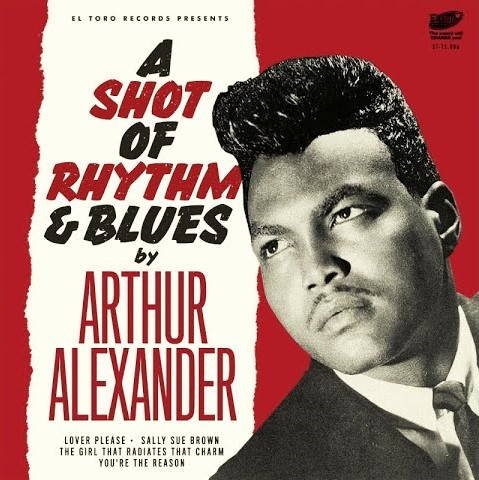 As for musicianship, Lennon steals the show as he does for most of the "A Hard Day's Night" album. His powerhouse "bluesy" vocals convincingly depict that he means everything he sings about. While his vocal double-tracking leaves something to be desired, he uses it sparingly and to great effect, although flaws are still evident, such as during the lines "walk out that door again" in the bridge and "when I get home, yeah" in the final refrain. The influence of one of John's favorite singers, Arthur Alexander, is also heard in the lines "I'll love her moe, till I walk out that doe." As for musicianship, Lennon steals the show as he does for most of the "A Hard Day's Night" album. His powerhouse "bluesy" vocals convincingly depict that he means everything he sings about. While his vocal double-tracking leaves something to be desired, he uses it sparingly and to great effect, although flaws are still evident, such as during the lines "walk out that door again" in the bridge and "when I get home, yeah" in the final refrain. The influence of one of John's favorite singers, Arthur Alexander, is also heard in the lines "I'll love her moe, till I walk out that doe."
 Since no guitar solo is heard in the song, both Harrison and Lennon's roles in "When I Get Home" are that of rhythm guitarists. The "clanky" Rickenbacker guitar sound is prominently displayed throughout without even the sign of a guitar flourish. Since no guitar solo is heard in the song, both Harrison and Lennon's roles in "When I Get Home" are that of rhythm guitarists. The "clanky" Rickenbacker guitar sound is prominently displayed throughout without even the sign of a guitar flourish.
 Paul's bass work is primarily on the beat without too much fuss but very appropriate to the R&B feel of the song. What we can hear of his piano work is proficient but, obviously, wasn't deemed appropriate to the song since it was kept so low in the mix as to be almost nonexistent. His vocals are spotless as usual, the shakiness of the harmonies more due to John's high reach than anything else. Paul's bass work is primarily on the beat without too much fuss but very appropriate to the R&B feel of the song. What we can hear of his piano work is proficient but, obviously, wasn't deemed appropriate to the song since it was kept so low in the mix as to be almost nonexistent. His vocals are spotless as usual, the shakiness of the harmonies more due to John's high reach than anything else.
Ringo gets a chance to display his chops a little bit more here than in many other tracks on the album. His accents in the refrains and the fills to bridge the gaps between the sections of the song stand out nicely.
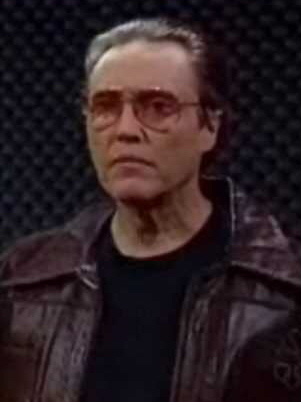 It should be mentioned that, although Lennon referred to this track in an interview as "a four-in-the-bar cowbell song," there is not one hit on any cowbell throughout. No doubt, he was confusing this song with three other similar sounding tracks recorded this year, namely "You Can't Do That," "A Hard Day's Night" and "I Call Your Name," which all have cowbell played four-in-the-bar. If only the legendary producer Bruce Dickenson worked with The Beatles back then, we surely would have been enjoying "more cowbell" in this song too, baby. :-) It should be mentioned that, although Lennon referred to this track in an interview as "a four-in-the-bar cowbell song," there is not one hit on any cowbell throughout. No doubt, he was confusing this song with three other similar sounding tracks recorded this year, namely "You Can't Do That," "A Hard Day's Night" and "I Call Your Name," which all have cowbell played four-in-the-bar. If only the legendary producer Bruce Dickenson worked with The Beatles back then, we surely would have been enjoying "more cowbell" in this song too, baby. :-)
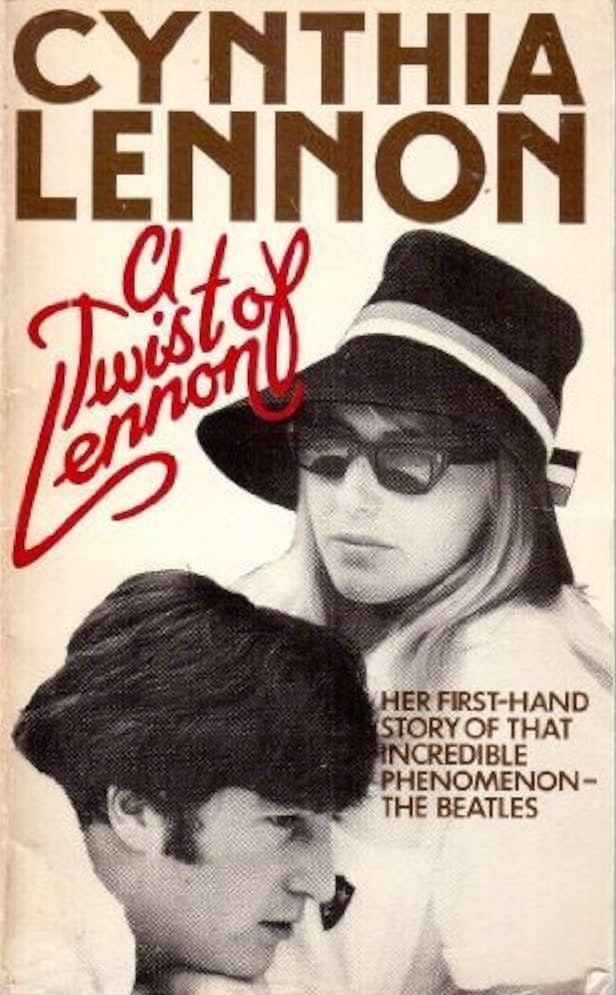 Lyrically, Lennon appears simply to be wanting to escape the business pressures of the group to return home to Cynthia. Since the song most likely was written during a vacation he was having with Cynthia, it may have been an attempt by John to pacify and console her due to him being away all the time. Apparently by this time, John had already 'loved her till the cows came home.' Lyrically, Lennon appears simply to be wanting to escape the business pressures of the group to return home to Cynthia. Since the song most likely was written during a vacation he was having with Cynthia, it may have been an attempt by John to pacify and console her due to him being away all the time. Apparently by this time, John had already 'loved her till the cows came home.'
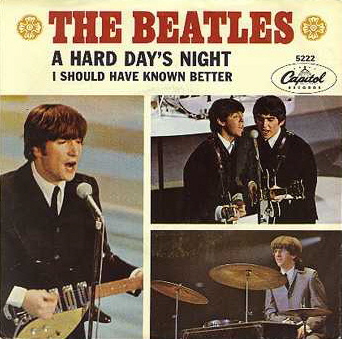 John's clever use of phrases like "out my way," "let me through" and "if you please" work well to add a measure of "cool" to the lyrics while presenting an immediacy to his intentions. His use of the word "trivialities" reveals John's literary nature, a word such as this being quite unusual in a pop song at the time. However, the similarity between this song and "A Hard Day's Night" is quite apparent ("when I get home to you..." and "when I'm home, everything seems to be right") but the delivery demonstrates an intensity not felt in the previous song. John's clever use of phrases like "out my way," "let me through" and "if you please" work well to add a measure of "cool" to the lyrics while presenting an immediacy to his intentions. His use of the word "trivialities" reveals John's literary nature, a word such as this being quite unusual in a pop song at the time. However, the similarity between this song and "A Hard Day's Night" is quite apparent ("when I get home to you..." and "when I'm home, everything seems to be right") but the delivery demonstrates an intensity not felt in the previous song.
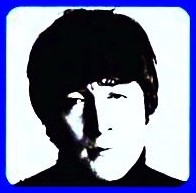 One confusing line, "I'll love her more, till I walk out that door again," may cause some enthusiasts to think he's referring to his philandering ways continuing when he leaves Cynthia again. Although this line has never been explained, we can easily assume that he was emphasizing the "make-up-sex" they'll have when he finally gets there. Not articulated very well, but it's close enough for rock'n'roll. One confusing line, "I'll love her more, till I walk out that door again," may cause some enthusiasts to think he's referring to his philandering ways continuing when he leaves Cynthia again. Although this line has never been explained, we can easily assume that he was emphasizing the "make-up-sex" they'll have when he finally gets there. Not articulated very well, but it's close enough for rock'n'roll.
American Releases
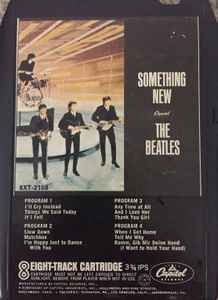 America got its first taste of "When I Get Home" as the fourth track on the Capitol album "Something New," released on July 20th, 1964. Knowing that the album spent nine weeks in the #2 spot on the Billboard album chart and sold over two million copies, it's amazing that many Beatles fans say they aren't familiar with the song! This album got its compact disc release on January 21st, 2014, both the mono and stereo versions of the album being contained on a single CD. America got its first taste of "When I Get Home" as the fourth track on the Capitol album "Something New," released on July 20th, 1964. Knowing that the album spent nine weeks in the #2 spot on the Billboard album chart and sold over two million copies, it's amazing that many Beatles fans say they aren't familiar with the song! This album got its compact disc release on January 21st, 2014, both the mono and stereo versions of the album being contained on a single CD.
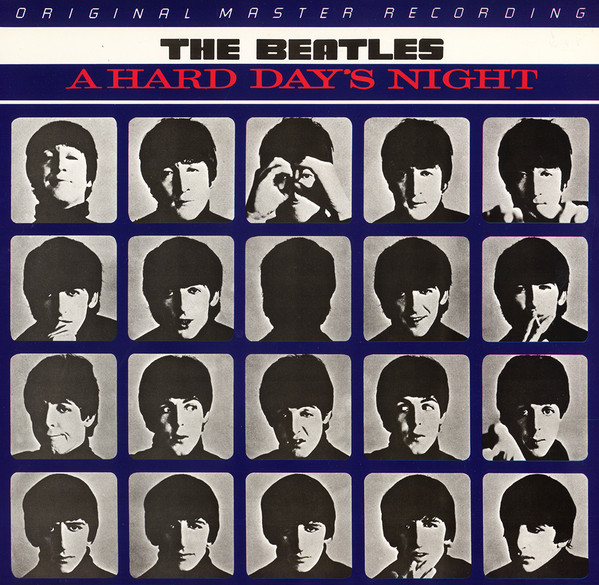 The first time the original British "A Hard Day's Night" album was made available in the US was the "Original Master Recording" vinyl edition released through Mobile Fidelity Sound Lab in February of 1987. This album included "When I Get Home" and was prepared utilizing half-speed mastering technology from the original master tape on loan from EMI. This version of the album was only available for a short time and is quite collectible today. The first time the original British "A Hard Day's Night" album was made available in the US was the "Original Master Recording" vinyl edition released through Mobile Fidelity Sound Lab in February of 1987. This album included "When I Get Home" and was prepared utilizing half-speed mastering technology from the original master tape on loan from EMI. This version of the album was only available for a short time and is quite collectible today.
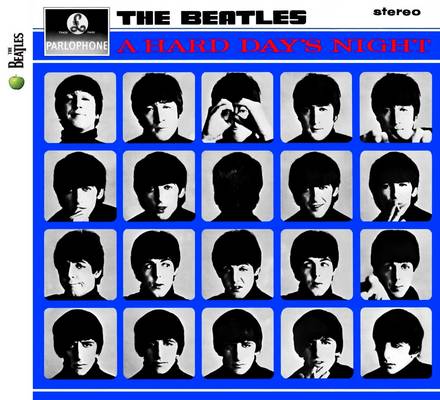 February 26th, 1987 was the date that the British "A Hard Day's Night" album finally made it to America in the compact disc format, a vinyl edition coming out on July 21st, 1987. While this album was in mono only, the stereo remastered version on CD was released on September 9th, 2009, the vinyl edition coming out on November 13th, 2012. February 26th, 1987 was the date that the British "A Hard Day's Night" album finally made it to America in the compact disc format, a vinyl edition coming out on July 21st, 1987. While this album was in mono only, the stereo remastered version on CD was released on September 9th, 2009, the vinyl edition coming out on November 13th, 2012.
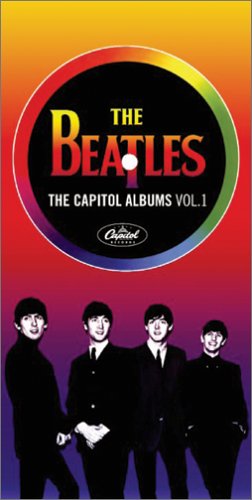 On June 30th, 1992, Capitol released a CD box set entitled "Compact Disc EP Collection." The mono mix of "When I Get Home" was included because of its being on the original British EP "Extracts From The Album A Hard Day's Night," which was released on November 6th, 1964. On June 30th, 1992, Capitol released a CD box set entitled "Compact Disc EP Collection." The mono mix of "When I Get Home" was included because of its being on the original British EP "Extracts From The Album A Hard Day's Night," which was released on November 6th, 1964.
The box set "The Capitol Albums, Vol. 1" (released on November 15th, 2004) contains both the mono and stereo versions of the song as first heard on "Something New."
On September 9th, 2009, the CD box set "The Beatles In Mono" was released, which features a stunning remastered mono version of "When I Get Home." The vinyl edition was first released on September 9th, 2014.
Live Performances
To put it simply, The Beatles didn't think enough of the song to perform it anywhere. Not even for BBC radio. Sadly enough, the day that they recorded the song, June 2nd, 1964, was the only day in their entire career that they ever touched the song.
Conclusion
 With "When I Get Home," there is definitely more than meets the eye. It shows the experimental nature The Beatles projected themselves into in order to mature as musicians. It may be a loud rocker with flavors of blues and R&B (like "I Wanna Be Your Man"), but its tricky chord changes can leave you breathless. It actually skirts around musical keys so much that you can't quite find your bearings. Later songs, such as "Penny Lane" and "The Continuing Story Of Bungalow Bill," reveal the same technique but with more aplomb. "When I Get Home" is not a song to be underestimated or dismissed. Enjoy! With "When I Get Home," there is definitely more than meets the eye. It shows the experimental nature The Beatles projected themselves into in order to mature as musicians. It may be a loud rocker with flavors of blues and R&B (like "I Wanna Be Your Man"), but its tricky chord changes can leave you breathless. It actually skirts around musical keys so much that you can't quite find your bearings. Later songs, such as "Penny Lane" and "The Continuing Story Of Bungalow Bill," reveal the same technique but with more aplomb. "When I Get Home" is not a song to be underestimated or dismissed. Enjoy!
Song Summary
"When I Get Home"
Written by: John Lennon / Paul McCartney
-
Song Written: May 1964
- Song Recorded: June 2, 1964
- First US Release Date: July 20, 1964
- First US Album Release: Capitol #ST-2108 "Something New"
- US Single Release: n/a
- Highest Chart Position: n/a
- British Album Release: Parlophone #PCS 3058 "A Hard Day's Night"
- Length: 2:18
- Key: C major
- Producer: George Martin
- Engineers: Norman Smith, Ken Scott
Instrumentation (most likely):
- John Lennon - Lead Vocals, Rhythm Guitar (1964 Rickenbacker 325)
- Paul McCartney - Bass Guitar (1963 Hofner 500/1), Harmony Vocals, Piano (1905 Steinway Vertegrand upright)
- George Harrison - Rhythm Guitar (1963 Gretsch 6122 Country Gentleman), Harmony Vocals
- Ringo Starr - Drums (1964 Ludwig Super Classic Black Oyster Pearl)
Written and compiled by Dave Rybaczewski
|
IF YOU WOULD LIKE TO MAKE A DONATION TO KEEP THIS WEBSITE UP AND RUNNING, PLEASE CLICK BELOW!
|